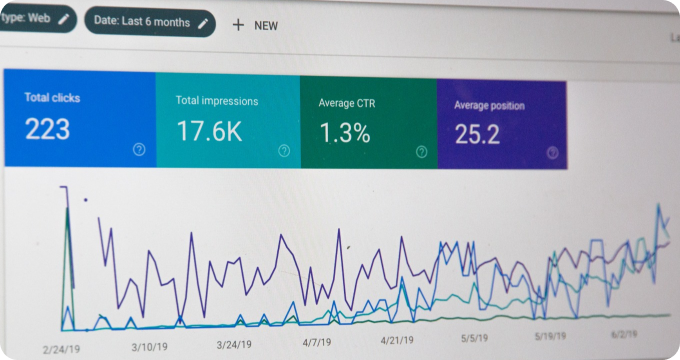How to Create a Budget for Implementing Product Cost Management Software
- January 09, 2024
- 2 minutes
The emergence of Product Cost Management (PCM) software has revolutionized the way organizations manage their expenses and cost structures. Implementing this tool into your business functions can bring a paradigm shift in the way you handle cost-related issues. However, like any other investment, one must budget for the implementation of such software to prevent overspending and ensure an ideal return on investment (ROI). Now, let's delve into the process of creating a budget for this task - stringently and meticulously.
Firstly, it's paramount to apprehend what PCM software is before diving into budgeting for its implementation. In essence, PCM is a set of tools, methodologies, and guidelines that aid in managing, estimating, and reducing costs through a product's lifecycle from conception to end-of-life. It allows businesses to foresee and scrutinize the cost implications of changes to product designs, materials, manufacturing methods, logistics, and more. Therefore, this software is highly pertinent in today's dynamic business environment.
To initiate the process of budgeting for PCM implementation, a comprehensive understanding of the current product cost structure is indispensable. Companies need to thoroughly assess their current expenditures and where those costs are allocated. This step involves a deep analysis of cost data, including costs associated with materials, labor, overhead, and others, which will subsequently aid in understanding the potential impact of PCM software implementation.
Following this analysis, the next step involves determining the overall cost of the PCM software. This includes upfront costs such as the software license, implementation, and hardware requirements as well as recurring costs such as maintenance, upgrades, training, and support. The total cost of ownership (TCO) must be calculated over the software’s expected lifespan to provide a more accurate reflection of the costs involved.
One must consider the variations in the costs of PCM software available in the market. Software-as-a-service (SaaS) models, for example, often operate on a subscription basis, whereas on-premise solutions may involve a high upfront cost. Therefore, it’s crucial to compare and contrast different software models to identify which aligns best with your company’s financial situation and needs.
However, the financial aspect is not the only consideration when budgeting for PCM software. The concept of economic utility also plays a significant role in this process. The expected utility theory, a cornerstone of modern economics, posits that people make decisions based on the perceived value or satisfaction they expect to gain. In this case, it’s crucial to anticipate the potential value the PCM software would bring to your business. This includes efficiency gains, cost savings, and improvements in decision-making processes.
After determining the potential value, the next step is to set a budget that adequately reflects this utility. This involves determining the maximum amount you are willing to pay for the perceived benefits of the software. This concept, referred to as the reservation price in economics, is critical in negotiating the price of the software with vendors.
Once the budget is defined, it's essential to have contingency plans in place. The Bayesian theorem, a probability theory that determines the likelihood of an event based on prior knowledge, can be applied here. By assessing the potential risks and uncertainties associated with PCM implementation, such as unexpected costs or delays, companies can allocate funds in their budget to mitigate these risks.
Finally, the budgeting process for PCM software implementation should be iterative and flexible. As the business environment and company needs evolve, so should the budget. Regular reviews and updates to the budget based on new information or changing circumstances are crucial to ensure it remains relevant and effective.
In conclusion, budgeting for the implementation of Product Cost Management software is a multifaceted process that requires thorough analysis and strategic planning. With a blend of rigorous financial scrutiny, astute application of economic theories, and prudent risk management, companies can effectively plan for the costs of this transformative tool. However, it's the intellectual rigor in this process that truly ensures the maximization of the software's potential and the achievement of an optimal return on investment.
Learn More
Unleash the power of efficiency and profitability in your business by diving deeper into our enlightening blog posts about product cost management software. For an unbiased, comprehensive view, the reader is encouraged to explore our meticulously curated rankings of Top Product Cost Management Software.
Popular Posts
-
 Product Cost Management Software Industry Report: Unveiling Key Findings and Insights
Product Cost Management Software Industry Report: Unveiling Key Findings and Insights
-
 Debunking 10 Myths About Product Cost Management Software
Debunking 10 Myths About Product Cost Management Software
-
 8 Things I Wish I'd Known About Product Cost Management Software Before Implementing It
8 Things I Wish I'd Known About Product Cost Management Software Before Implementing It
-
 What are Product Cost Management Software Solutions and How Do They Work?
What are Product Cost Management Software Solutions and How Do They Work?
-
 Ask These Questions to a Product Cost Management Software Provider to Choose the Right One for Your Business
Ask These Questions to a Product Cost Management Software Provider to Choose the Right One for Your Business






